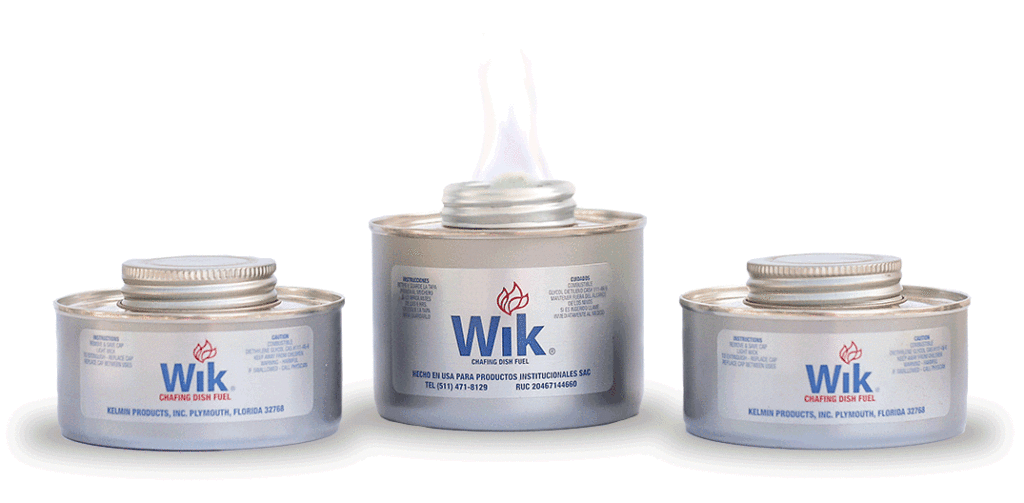WIK DIETHYLENE GLYCOL HEATERS
 WIK fills metal screw neck cans with diethylene glycol (DEG), presses (seals) a fiberglass wick system into the upper area of the screw neck and tightly caps the can with a metal screw cap.
WIK fills metal screw neck cans with diethylene glycol (DEG), presses (seals) a fiberglass wick system into the upper area of the screw neck and tightly caps the can with a metal screw cap.
This unit is then sold to distributors who sell the units to end users, mostly restaurants and hotels, who use them to heat chafing dishes and coffee urns.
THE DIFFERENCE
Diethylene glycol (DEG) type heaters are dramatically different from jellied alcohol heaters.
This DEG system was developed to be a safer alternative to the jellied alcohol heater which have been in use for nearly 100 years.
The jellied alcohol heater is a flammable product – flammable defined as having a flash point of 100 degrees Fahrenheit (37.8 Centigrade) or less, easy to light and burns rapidly.
DEG burners, on the other hand, are combustible – combustible defined as having a flash point of above 100 degrees Fahrenheit (37.8 Centigrade), hard to light and burns slowly.
DEG has a flash point of 265 degrees Fahrenheit (129.4 Centigrade). As DEG must be pre-heated to bum, the following is the series of events necessary for the DEG heater to work:
When heat (match) is applied to the fiberglass wick it heats the fiberglass to above 265 degrees Fahrenheit (129.4 Centigrade). This, in turn, starts to vaporize the DEG on the glass wick, the vapor then ignites and bums. The vaporized DEG flame continues to heat the glass to above 265 degrees Fahrenheit (129.4 Centigrade), which, in turn, continues to vaporize more DEG which bums and repeats the process.
The reservoir of DEG in the can remains far below the 265 degrees Fahrenheit (129.4 Centigrade) needed to vaporize. Therefore, the can never gets too hot to touch or to scorch the surroundings.
A convincing test of how hard it is to burn DEG is to pour a quantity on a concrete floor and try to light it – use a propane torch. As long as you keep the torch flame on the DEG it will flash – remove the flame and the DEG extinguishes.
Wood, plastic, corrugated boxes, pallets, paper products, oil, cloth, carpet and many other items found around the typical business or home burn more readily than DEG.
END USERS
- The flame does not bum down into the can. Therefore, the can does not become hot enough to bum fingers or scorch surroundings.
- If you drop a diethylene glycol (DEG) heater it will not spill out and set fire to the surroundings as a jellied alcohol type heater will do. Even if some of the DEG leaks from a damaged can it will not ignite without a continuing source of heat.
- DEG heaters burn longer, making it unnecessary to risk changing cans during a buffet when guests are present.
- When lighting, DEG heaters will not flash back as will jellied alcohol heaters.
- The longer burn time per can of DEG heaters allows smaller inventories in the storerooms of the end users.
I hope you enjoyed learning why our WIK chafing dish fuel is safer than a Jellied based heater. We would love to help you with all of your chafing fuel needs. Please feel free to contact us with any questions or comments you might have.
 (407) 886-6079
(407) 886-6079
kelminwik@aol.com

